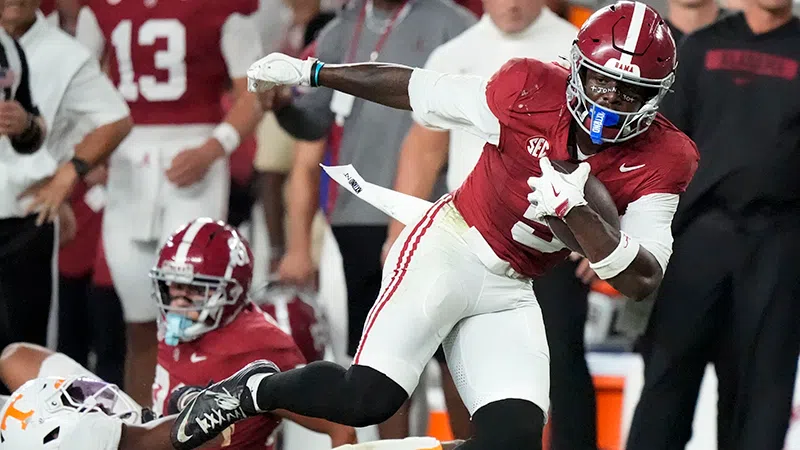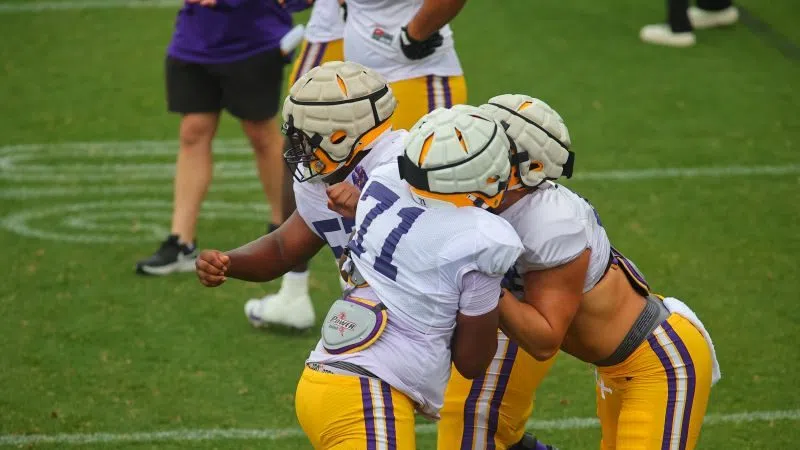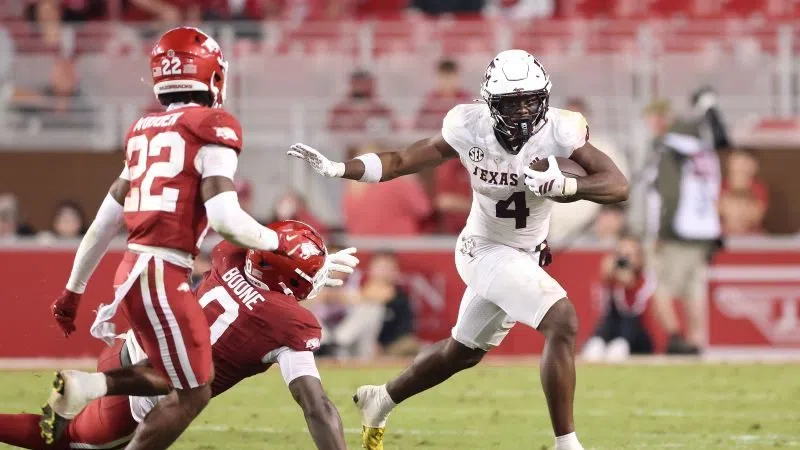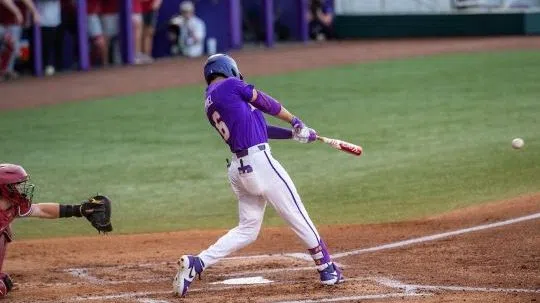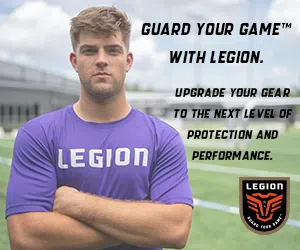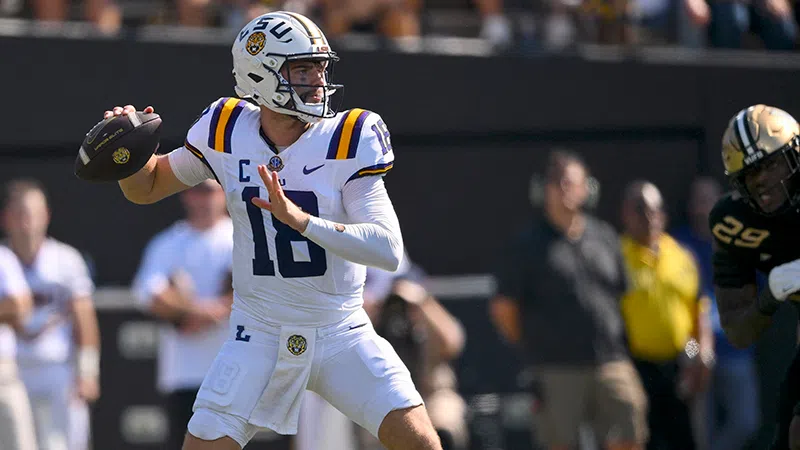
Steve Roberts-Imagn Images
By Matt Flynn and Jacob Hester
The good. The bad. The ugly.
Before we get into the film review, I want to make it abundantly clear that each one of these plays is just a small snapshot of a much broader picture that played out in Nashville on Saturday. These plays that we decide to break down are 100% hand-picked; not to create our own narrative, but to try and shed some light on plays or tendencies that play a big role in the outcome. Some things are small, some are more glaring; but hopefully we can have a little fun and learn some ball.
For this week’s film breakdown, we’re sticking with the offense. The LSU defense didn’t have its best day on Saturday, but most of the issues were physical mistakes. We’ll skip past the good and get right into the weeds.
When you’re one of only two Power Four teams, LSU and North Carolina, that hasn’t scored 25 points against an FBS opponent, that’s what you get.
Every player has bad plays every game. I don’t care if you are Tom Brady or Uncle Rico, there are some plays where you look like a hall-of-famer and others where you look like it’s your first time to put a helmet on. Trust me, I would not want to break down my college tape.
1. RPO – Just Run the Dang Ball
1st Quarter
1st and 10
LSU 0, Vanderbilt 0
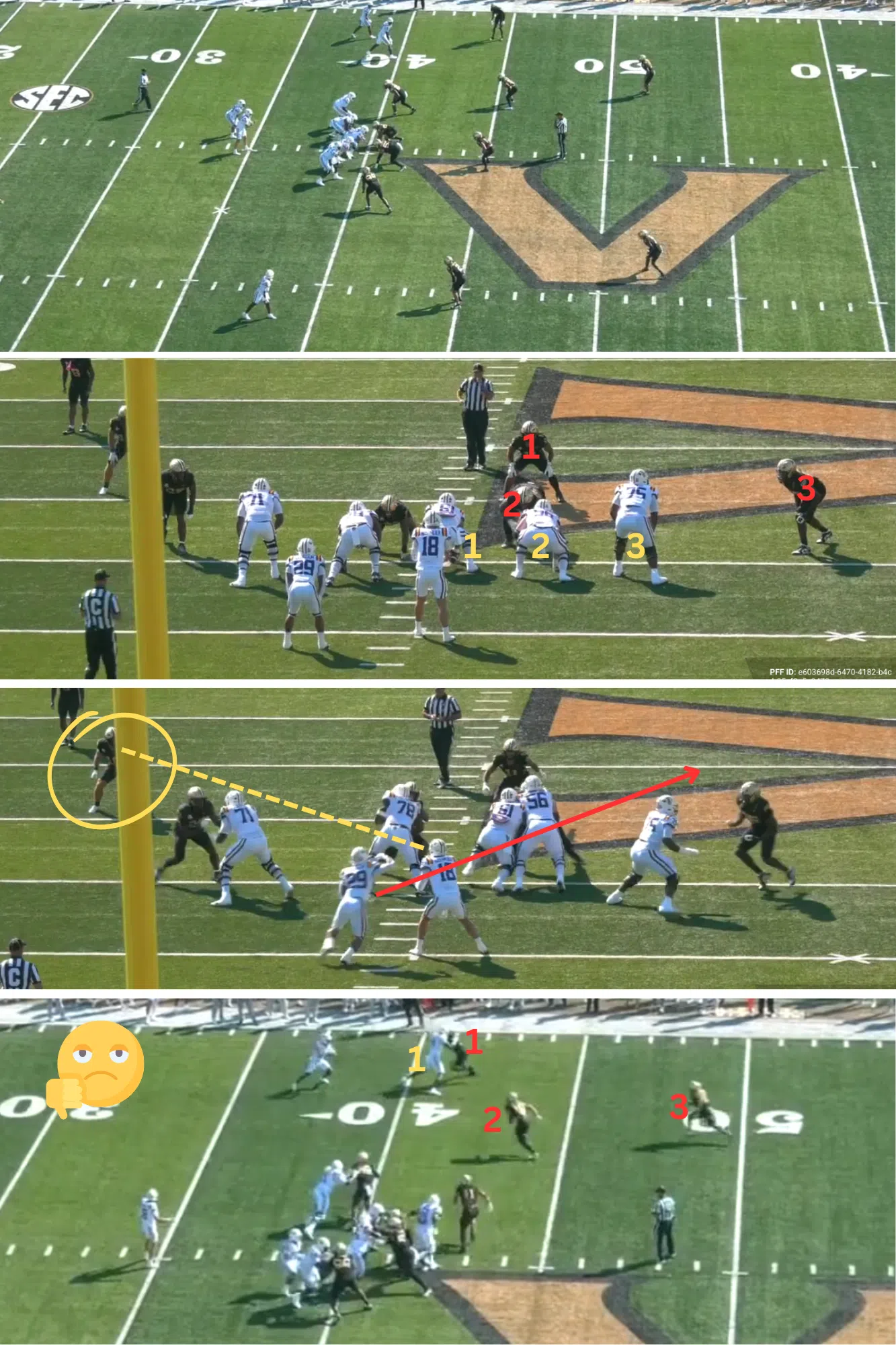
If you’ve listened to Off the Bench this season, you’ve probably heard me criticize LSU’s use of the RPO, the run-pass option. The next three plays highlight exactly why I feel that way, each for a different reason.
There is a reason why it is called an RPO and not a PRO. Run the ball first. The pass option is there as an answer for the QB if the running game is taken away and there is an advantageous look for the receiver.
On this play, LSU lines up in a 2×2 formation against a defense showing a five-man box, four defensive linemen and one linebacker. Running the ball is a numbers game and we have great numbers. Three blockers for three defenders on the right side. This should be handed off to the running back 100% of the time. Period. End of story. No excuses.
Why did he throw it? When I watch film, I like to watch the stripe of the QBs helmet. This is how you can tell exactly where he is looking. From the helmet stripe, it’s clear that Garrett Nussmeier is reading the weak-side linebacker (Will) rather than accounting for the total number of defenders. The only reason a quarterback would read the linebacker instead of counting defenders is if the wide receiver screen is the primary option rather than the run.
Why is that a problem? Take a look at this image, if LSU had simply counted defenders and run the ball, the play had a clear path to success.
2. RPO – Dig Out The Safety
1st Quarter
2nd and 9
LSU 3, Vanderbilt 7
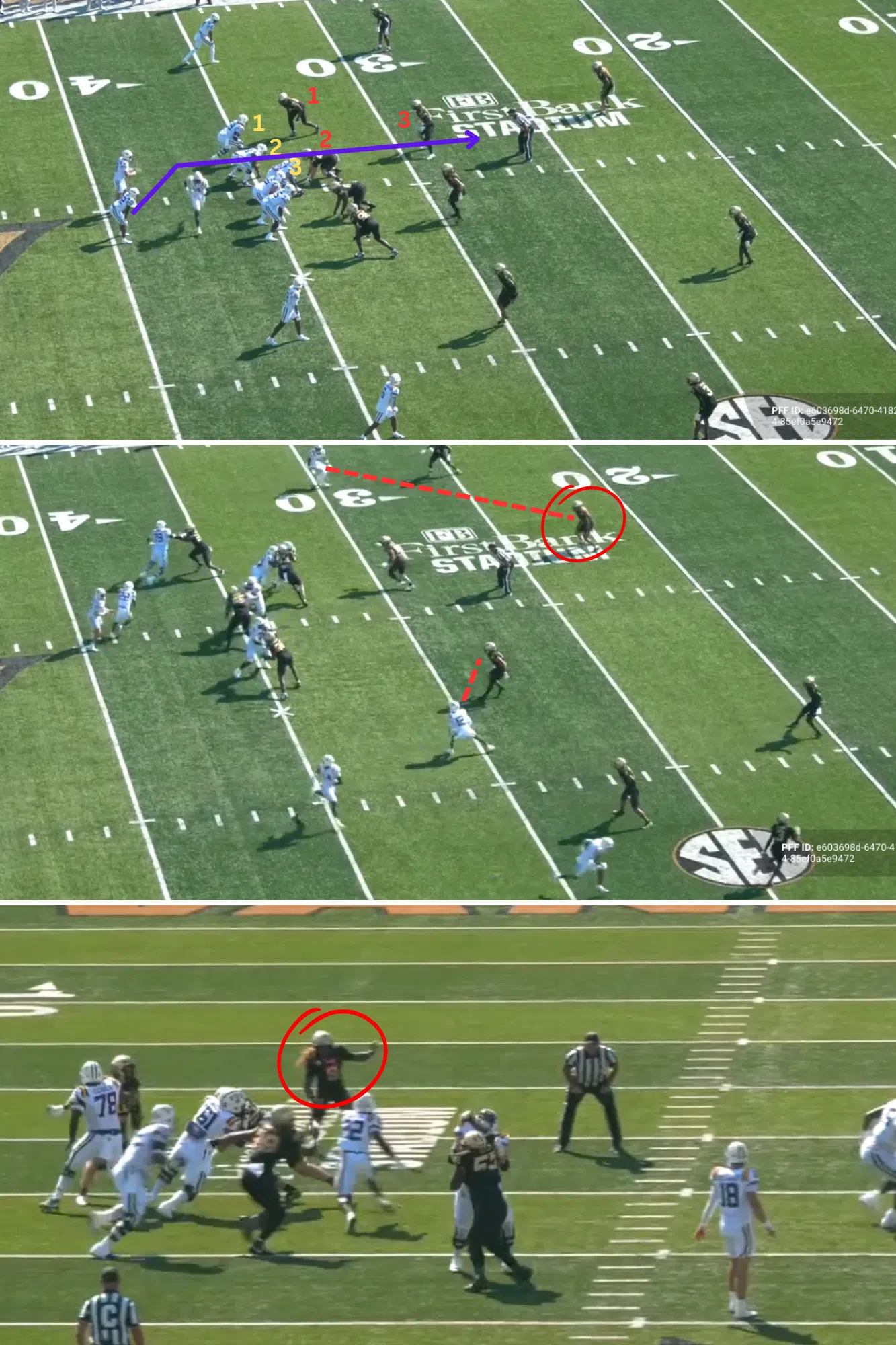
LSU shifts into a 3×1 formation and runs a zone play to the left side. Can anyone tell me what the wide receivers are not doing when they are running routes? Blocking. They aren’t accounting for the third level of defenders — the secondary — after blocking the first level (defensive line) and second level (linebackers). Not every explosive run includes all three levels of blocking, but most do. In RPO schemes, however, you rarely get consistent third-level blocking.
One thing that I learned a long time ago was that you never run an RPO route to the side of the run play because they are crucial to the blocking scheme. On this play, we see the play-side wide receiver running a hitch route.
Is this a mistake by him or just a bad design? I don’t know, but I do know that this play should have been an explosive running play. In every offense I’ve played in or studied, the play-side wide receiver’s job is to aggressively go and dig out the safety. If that happens here, the running back hits his head on the goalpost — you be the judge.
3. RPO – Tackles Get Too Deep
2nd Quarter
1st and 10
LSU 10, Vanderbilt 14
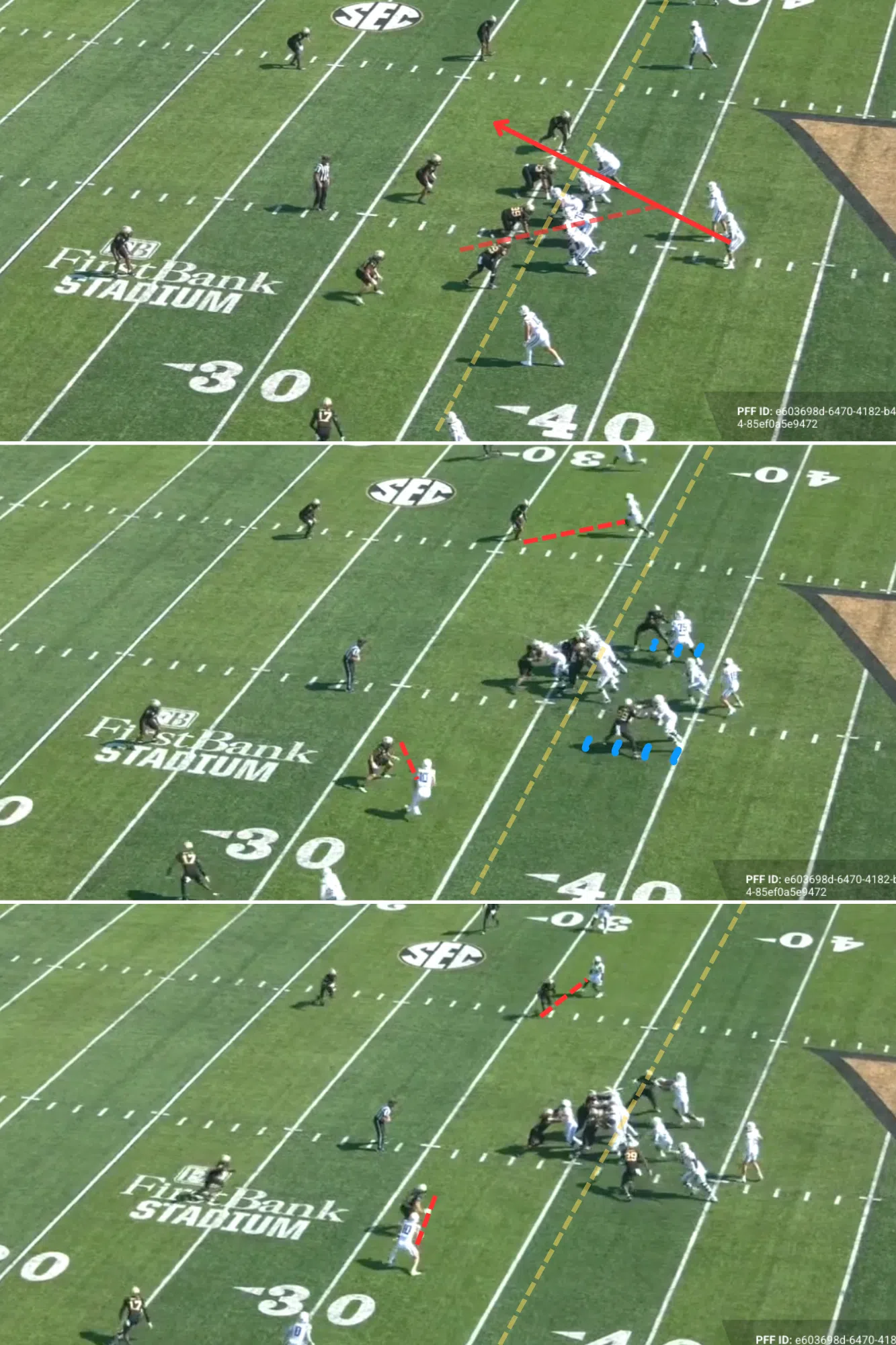
It’s a four-point game with 1:43 left in the first half. LSU’s defense just came up big on fourth down, giving the offense a chance to take the lead before halftime. And what shows up again? Another one of those RPOs to help keep us out of the endzone.
LSU lines up in a 2×2 formation with the back set to the left. The Tigers have ideal numbers here, two high safeties and only five defenders in the box. You couldn’t ask for a better look on first down. The issue? Because it’s an RPO, both tackles take pass sets and drop too deep.
You can see the line of scrimmage (LOS) is at the 36. The left tackle sets four yards behind the LOS and the right tackle sets three yards behind the LOS.
Why does this matter? Instead of initiating contact with the defender at the LOS, they back up and allow the defender to read the run play and take a clear and nearly untouched path to the running back. We were lucky to get two yards.
Again, there is no way to know why this happened. Did somebody call the play wrong? Did someone not hear the call correctly? Is it just bad coaching points? Who knows, but it can’t happen in that situation.
Just run the ball and get your receivers to block. This could have been a gash.
4. COVER ZERO – Protection First
2nd Quarter
3rd and 12
LSU 10, Vanderbilt 14
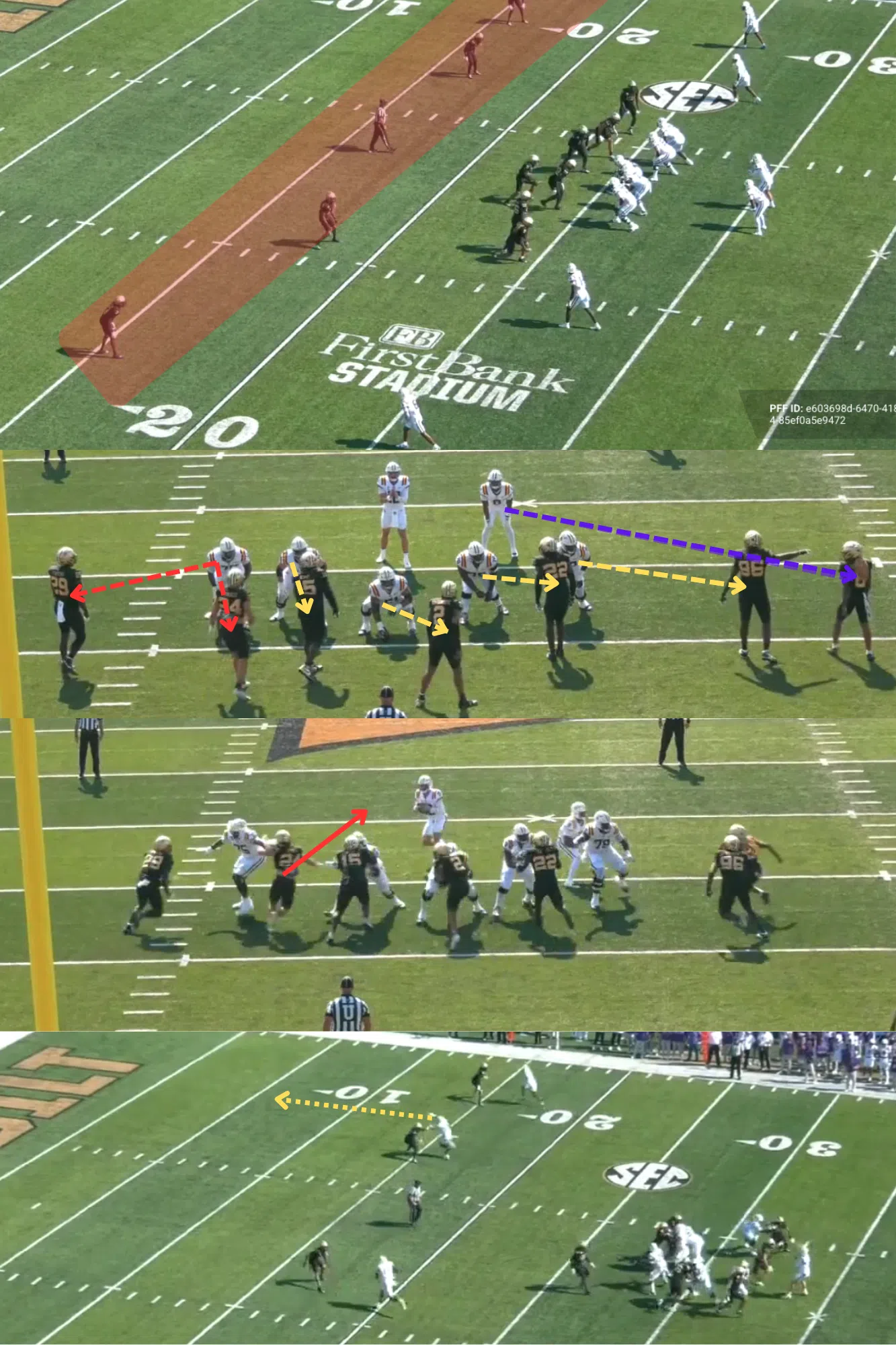
Same drive as the previous play, 54 seconds left in the first half and a big opportunity for LSU to take the lead before halftime.
Vanderbilt comes out and shows a cover zero look. Cover zero means that there are zero safeties to help deep. This is straight man-to-man coverage, which you can typically identify when all defensive backs are lined up 8–10 yards off the receivers and positioned on the same level. It also means that they are going to be bringing the house.
Football is math, right? If you are playing man-to-man on the five potential pass catchers, with no help deep, that means you can blitz six people. If they only block with five guys, you have one person that will be unblocked. If they block with six people, the defenses rush seven and creates the same advantage.
Let me emphasize that blocking this can be complicated at the college level and there is a lot of communication that needs to happen. On this play, you will see six blockers for seven defenders. If they all come, Nussmeier is hot and has to get rid of the ball.
It may seem that the defense has the advantage, but if blocked and executed correctly, there is a huge opportunity for the offense to hit an explosive play. I have highlighted one way to achieve success here. Traditionally, the line will block the four down lineman, plus the most dangerous backer. However, on this look there is one call that could be made that will buy just enough time to hit Aaron Anderson for a touchdown.
I call this a dual block by the tackle, meaning if the linebacker in front of him blitzes, he will squeeze down to block him and leave the defensive end free. Why does that help? Because the defensive end is slower than the back and has a further distance to travel before he gets to the quarterback. This gives the quarterback just enough time to decipher what the receiver is doing and take a shot deep.
This did not happen, and Nussmeier had to guess where Anderson was going and we get an incomplete pass instead of a potential touchdown.
Again, this requires a high level of communication and execution, something I definitely didn’t grasp back in college. I just like to nerd out on pass pro and touchdowns.
5. FLYING V
4th Quarter
2nd and 5
LSU 21, Vanderbilt 31
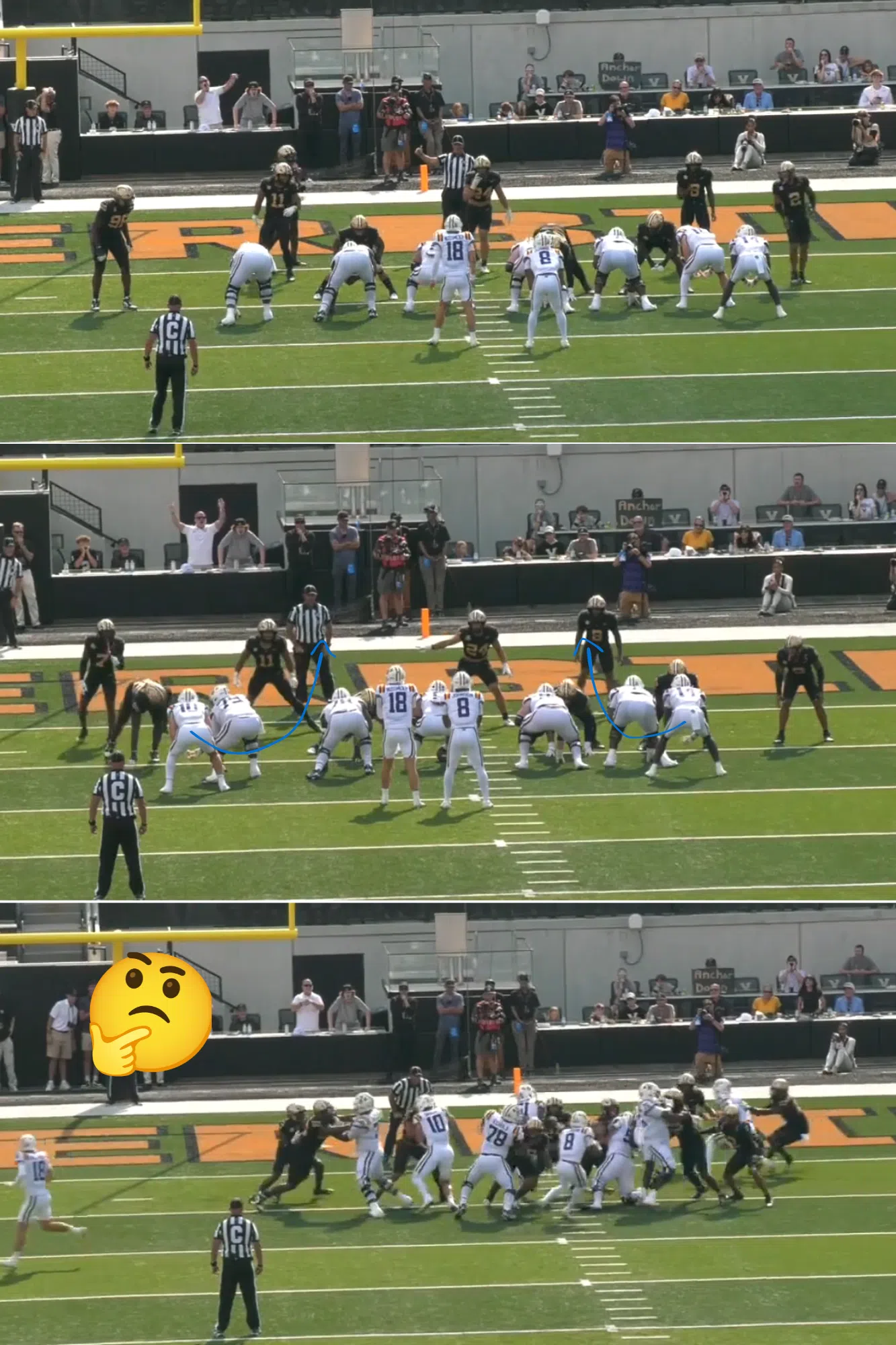
Well, we ran wildcat this game. I don’t have a lot to say about this one, and I certainly don’t have a lot of coaching points here, except that this play should be crumpled up and thrown in the Mississippi. LSU just had a big run to the Vanderbilt two-yard line, setting up a huge opportunity to punch it in during the fourth quarter.
We line up in a decent formation, 12 personnel. I was thinking that there may be a counter coming, or maybe even the elusive power play. Nope, we shift to a strange formation where Ju’Juan Johnson clearly lines up directly behind the center, with Nussmeier about a half foot away from him. I think they are trying to disguise the fact that Johnson is directly behind the center, but he ends up putting his hands up, indicating that he is clearly taking the snap.
I don’t really know what the play is, but I believe it is a zone play with the two tight end’s trying to block the strong-side linebacker (Sam) and Will at the second level. However, this play looked more like the “Flying-V” instead of a football play. Big shoutout to Gordon Bombay.
Nussmeier ran a swing to the left, and I can’t believe that he didn’t take at least one or two defenders with him.
6. No Play Is Ever The Same, Read It Out
4th Quarter
3rd and 6
LSU 21, Vanderbilt 31
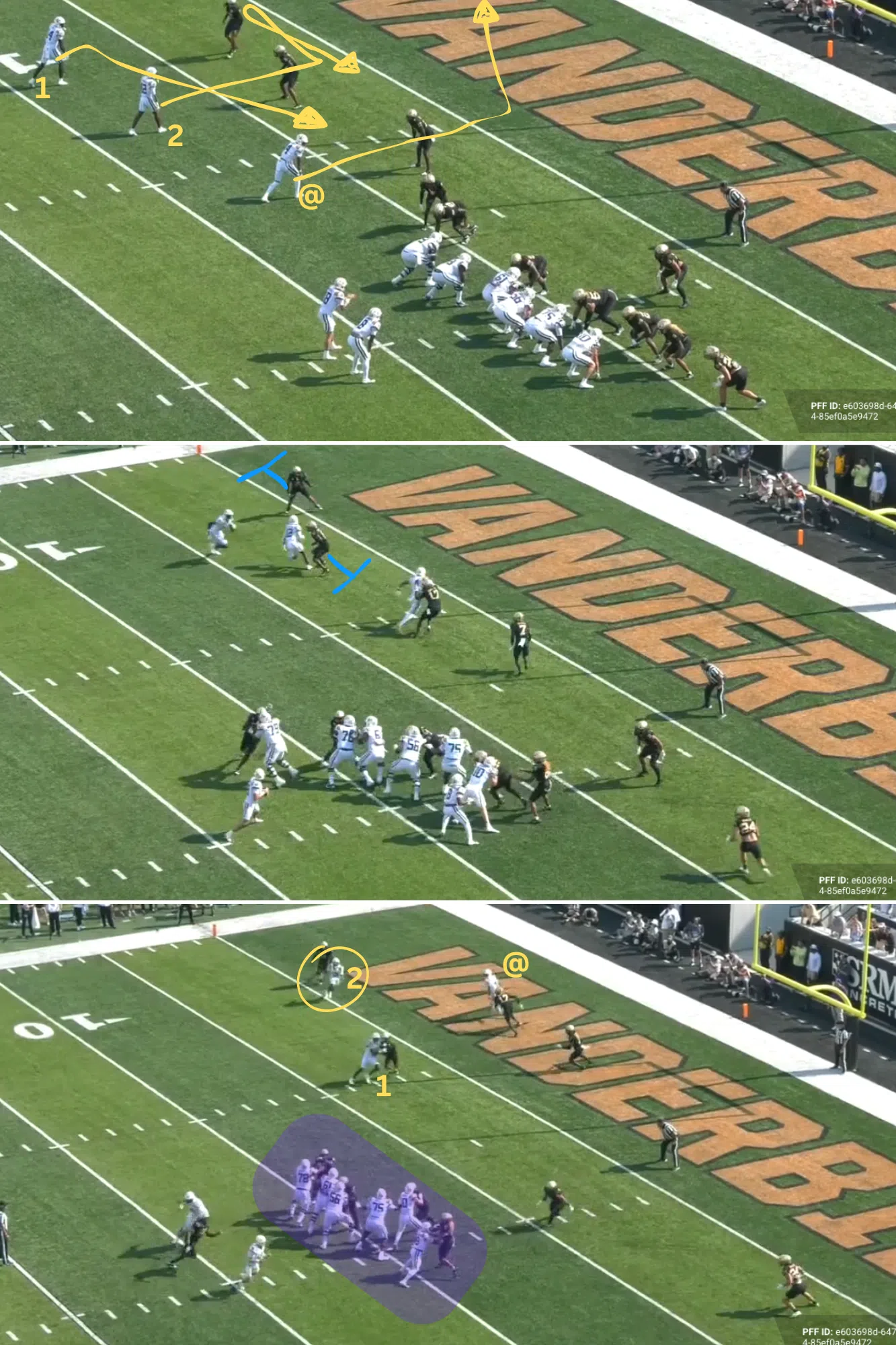
LSU had run this exact play to the right side on a two-point conversion earlier in the game. It worked perfectly. However, the other team has coaches, too, and they are also allowed to make adjustments.
Here’s the full progression on this play: the No. 3 receiver runs a corner route — that’s an alert (“@”) read, meaning the quarterback can go to him first if he likes the pre-snap look. Corner routes are a strong alert option against man coverage. The first true read is the outside receiver on the arrow route, followed by the No. 2 receiver running the “Otter” (out + return) route.
Vandy got burned on this earlier so they decided to play man-to-man and “bracket” the outside two wide receivers. Bracket is just another name for “in and out.” The inside-most defender will take the first receiver that goes inside, and the outside defender will take the receiver who goes outside.
How do you beat that? You send your two receivers the same direction and create the leverage advantage. Your first read is toast, but the second read pops open. Nussmeier just needed to hang in there and read it out. I am sure that he expected his No. 1 to be open and then lost vision.
Nussmeier faced pressure all day and I am sure he was a little gun-shy, but he got a great pocket here. All he needs to do was give a slight step up in the pocket and deliver an accurate throw. A missed opportunity on a well-designed play, and I’m sure it’s nothing he wouldn’t admit himself.
Final Thoughts
Just remember, football is hard. It’s a lot easier to talk about what should’ve happened than it is to design, install, teach, call, and execute it. The goal of these film breakdowns is simple: to help us all understand the game a little better than we did before. Be a ball knower!



